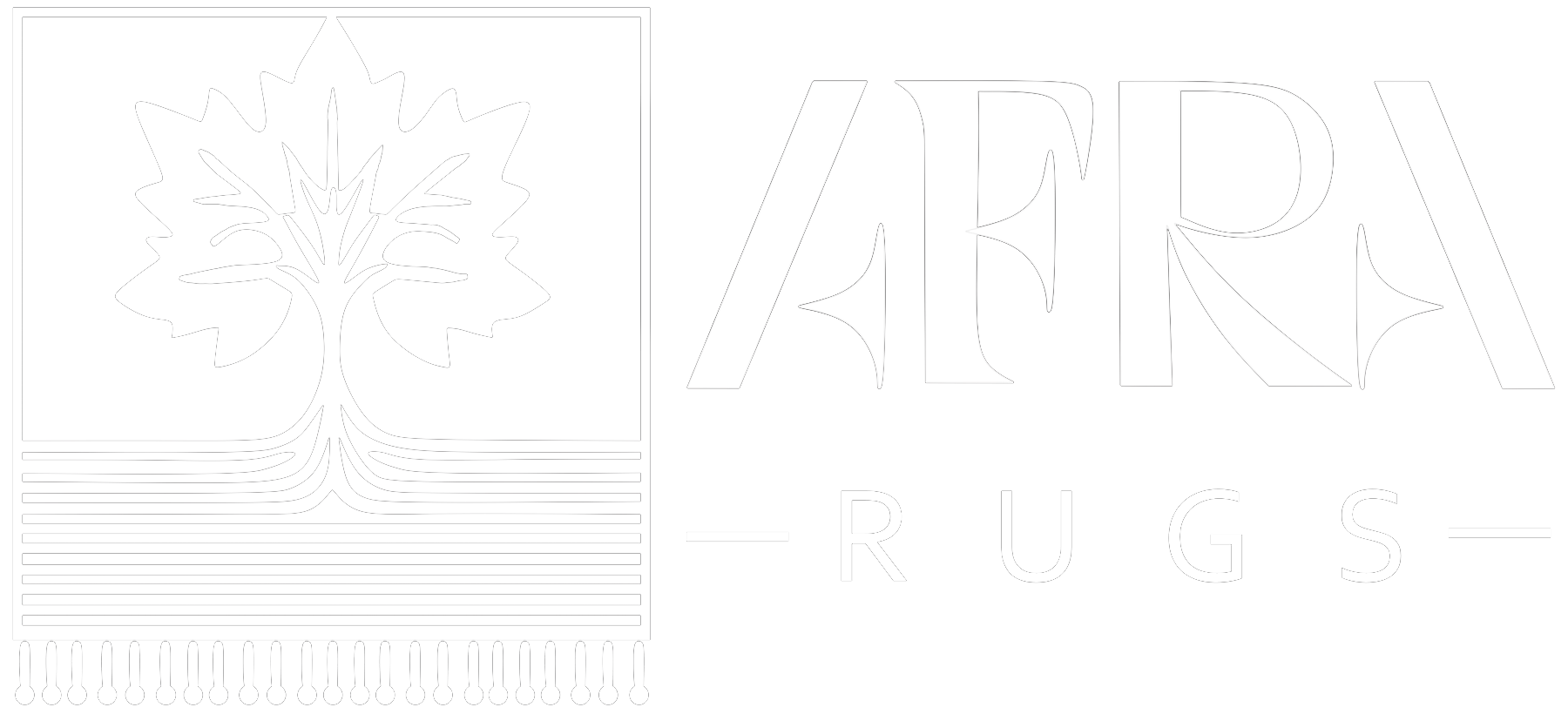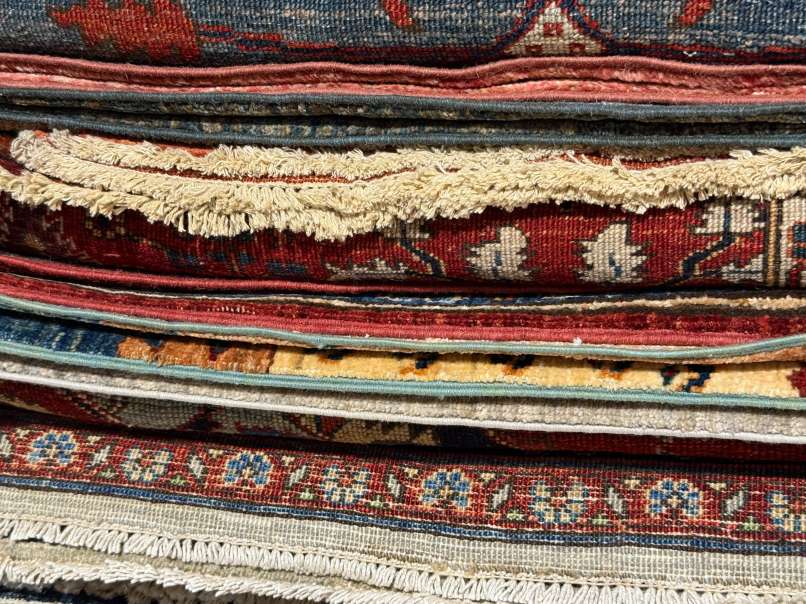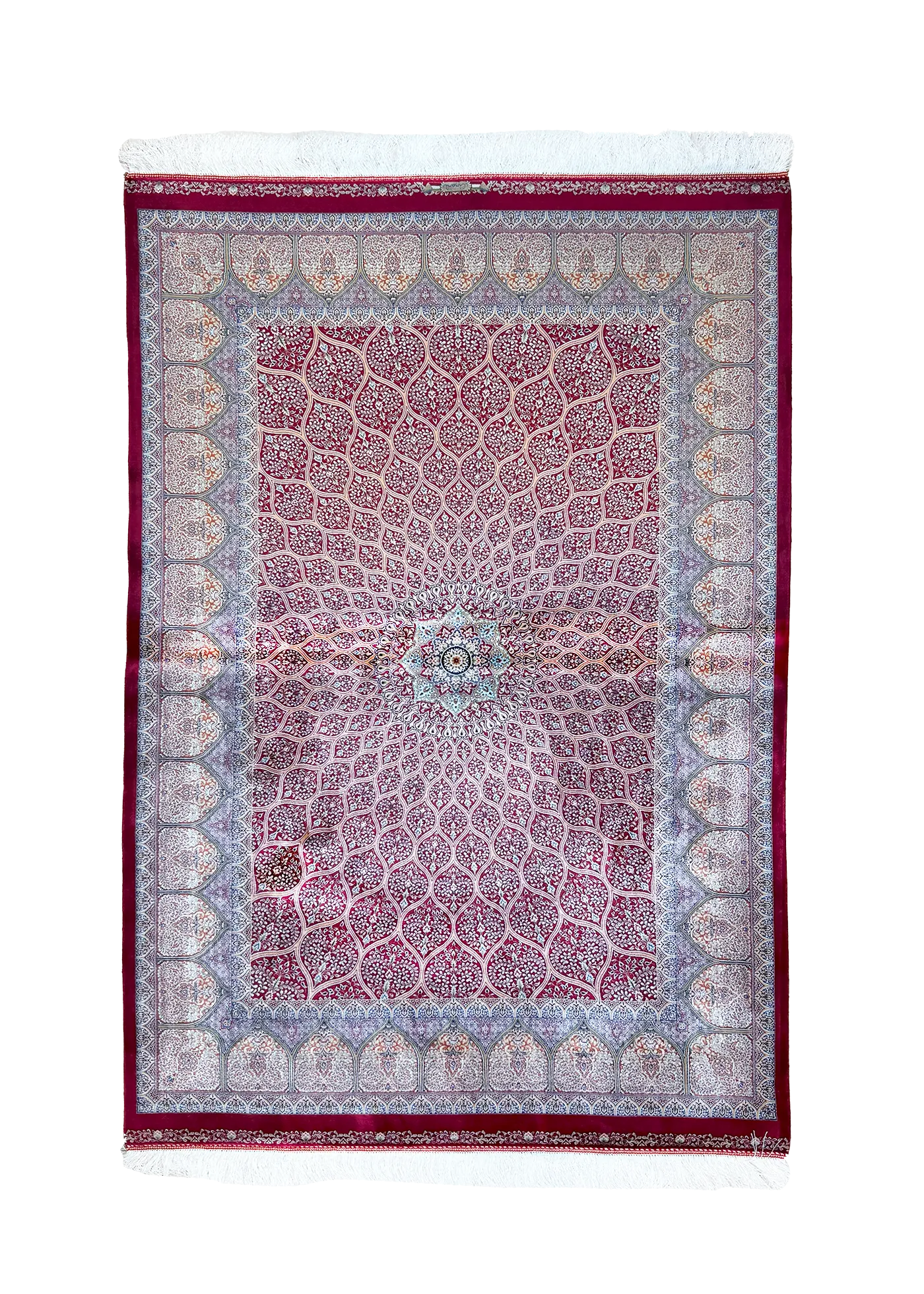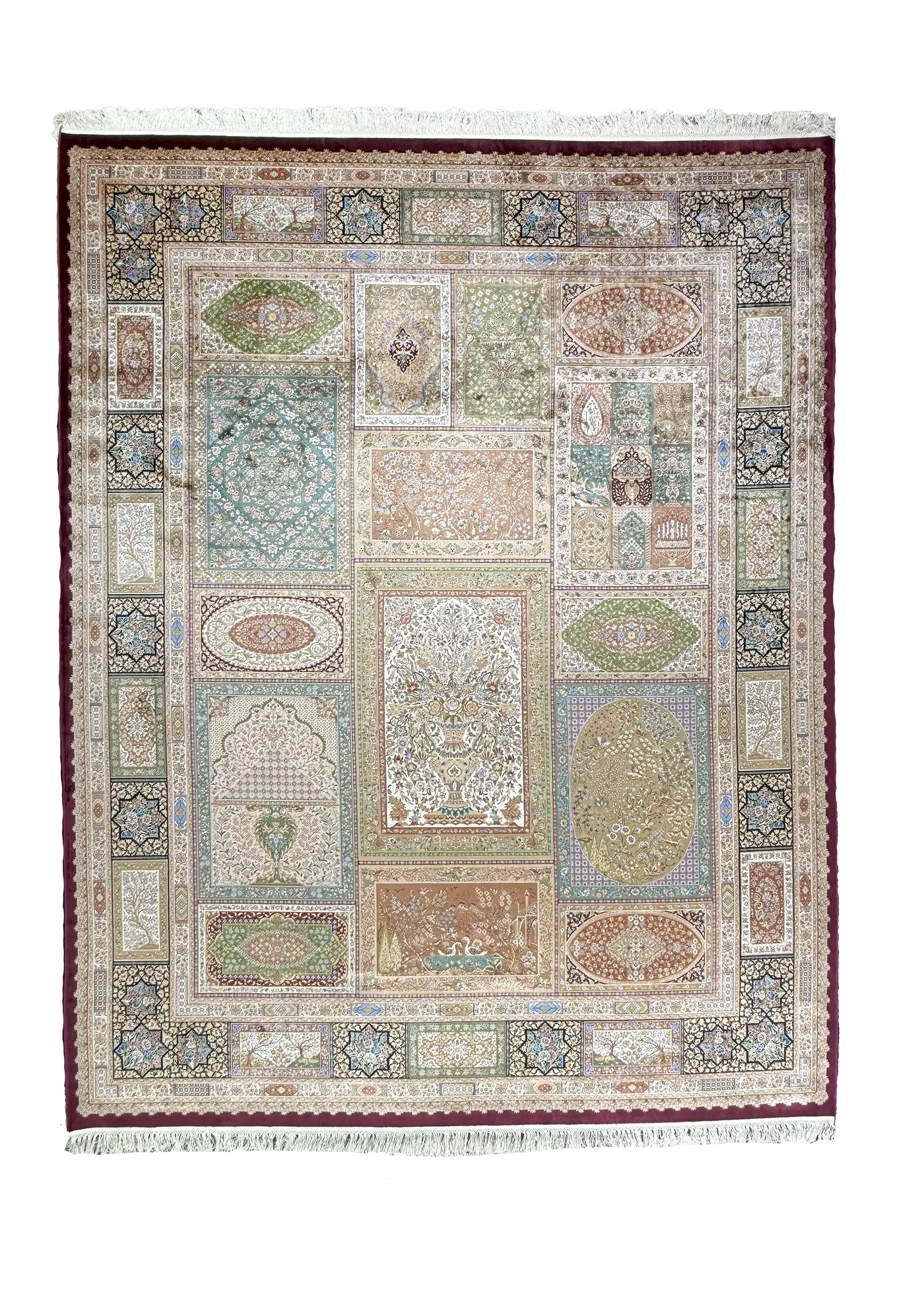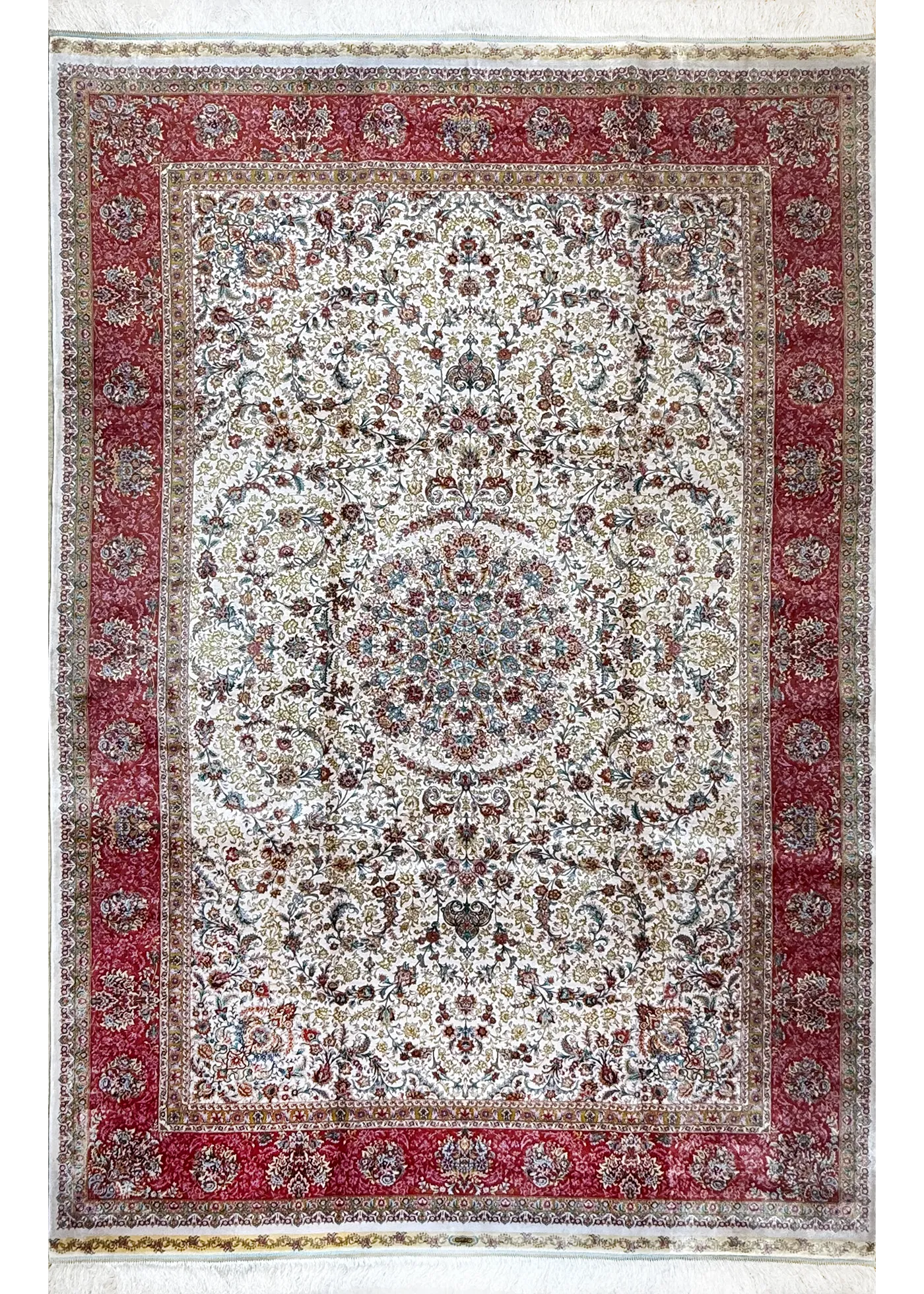Persian Rug Prices: 5 Secrets to Boost Value
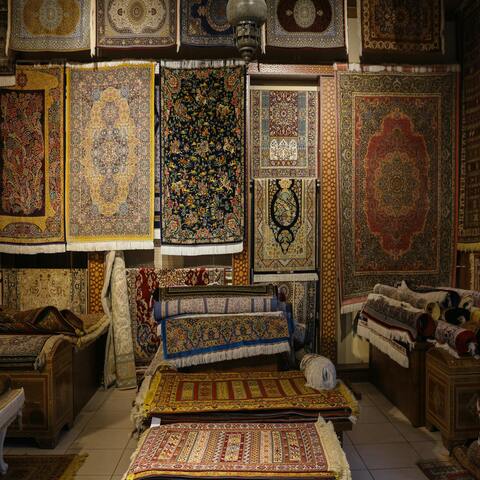
Explore the factors influencing Persian rug prices and discover the artistry that defines the value of Persian rugs.
More Than Just a Price Tag
Stepping into a room with a Persian rug underfoot is like entering a world of art and history. The colors dance subtly in the light, floral motifs intertwine with geometric patterns, and every inch tells a story. Each rug_antique, vintage, or contemporary silk_embodies timeless elegance and reflects generations of artistry.
Yet, the first question most people ask is: Why are Persian rug prices so varied? From small tribal rugs to large neutral_toned ones, many factors combine to determine Persian rug prices. Understanding these factors lets you see the true worth of these rugs_not only in price but in their aesthetic and cultural value.
Every rug carries its own tale_through color, pattern, and texture. While antique Persian rugs offer glimpses of bygone eras, contemporary designs bring tradition into modern interiors. Discover Persian and oriental rugs and see what determines their prices. Browse the Traditional Persian Rugs Collection or choose a standout [8×10 (Large)] piece.
Historical and Cultural Influences
Persian rugs are far more than mere decorative items. They are living chronicles of centuries of artistry, culture, and human expression. Each rug tells a story and showcases the aesthetic tastes, regional styles, and cultural values of its time and place.
Among these, antique Persian rugs hold special reverence for their historical significance. They often capture techniques, motifs, and color schemes perfected over generations, offering a tangible link to the past.
Regions such as Tabriz, Kashan, Isfahan, and Qom each developed signature styles. These styles feature unique patterns, motifs, and weaving techniques. Over time, they influenced not only local rug production but also the global appreciation of Persian and oriental rugs.
Tribal rugs provide a contrasting but equally compelling perspective. With bold geometric patterns, strong lines, and striking color contrasts, these rugs are rich in symbolism. Each motif can represent tribal stories, nature, spiritual meaning, or social status.
While these patterns may appear simple at first glance, closer inspection reveals layers of meaning and meticulous thought. Their enduring popularity comes from combining usefulness with visual storytelling, making them timeless pieces that resonate with collectors and interior enthusiasts alike.
Vintage Persian rugs serve as a bridge between the ancient and the contemporary. These rugs preserve the beloved designs of antiques but update the colors, proportions, and patterns for modern homes. This makes them more accessible to a wider audience without compromising the essence of Persian design. Vintage Persian rugs remain valuable and popular because they combine traditional artistry with contemporary adaptations.
Modern rug makers still draw heavily from historical designs. Contemporary designers draw inspiration from antique and tribal designs, using intricate designs, vibrant floral patterns, and precise geometric patterns. These rugs show the rich designs of historical masterpieces while adjusting to modern sizes, colors, and patterns. This preserves the cultural significance and beauty of Persian rugs, letting each rug tell its story through generations.
Understanding the historical and cultural context of these rugs provides deeper insight into their value of Persian rugs. A rug reflects history and culture, with each pattern, color, and motif carrying artistic and financial value.
Knot Density and Design Complexity
A rug’s knot density, measured in knots per square inch (KPSI), is one of the most important factors for its quality, design, and price.
Think of knot density like the pixels on a screen: a higher KPSI means a clearer, more detailed “picture.”
Low Knot Density: Bold and Simple
- Design: This category features bold, simplistic motifs. You often see strong geometric shapes and clear color contrasts, typical of tribal rugs.
- Value: They are beautiful and full of cultural meaning, often making a striking visual statement. They are usually the most affordable option.
Medium Knot Density: A Balanced Choice
- Design: This middle ground allows for clearer floral patterns, medallions, and other classic motifs. The designs have more detail than simple tribal rugs but are less complex than the most intricate pieces.
- Value: Their direct & clear for many home styles and mid_range pricing make these rugs a balanced choice.
High Knot Density: Intricate and Detailed
- Design: High KPSI allows for extremely detailed patterns. Artisans can create smooth curves, realistic flowers, and finely detailed medallions.
- Value: This level of detail requires exceptional skill, more time, and more material. This superior craftsmanship makes them the finest rugs available and commands the highest prices.
Why It Matters for All Rugs
- Durability: A higher knot density often means a tighter, stronger weave, making the rug more durable and longer_lasting.
- Even machine_made rugs replicate high knot density. This imitation proves that a dense, intricate appearance is a globally recognized indicator of a valuable rug.
Knot Density and Design Complexity in Persian and Oriental Rugs
| Region/Period | Design Characteristics | Impact on Modern Value |
|---|---|---|
| Tabriz (Northwest) | Symmetrical medallions, floral borders | High demand for intricacy and elegance |
| Kashan (Central) | Rose patterns, classic motifs | Moderate_to_high value; traditional appeal |
| Isfahan (Central) | Fine, dense patterns, soft color palette | Considered premium; often higher Persian rug prices |
| Qajar Era Rugs | Bright colors, bold designs | Influence modern vibrant styles |
| Contemporary Bamboo Silk | Eco-friendly, smooth finish | Accessible luxury; modern value focus |
Materials, Dyes, and What Makes a Rug Valuable
The materials used in a rug are fundamental to its quality. They affect both its price and its beauty.
The Role of Materials: Beauty and Strength
A subtle luster and delicate texture distinguish silk rugs. This shine makes the designs stand out and adds a feeling of luxury.
However, aesthetics are only one consideration. High_quality wool and other strong fibers make a rug durable.
This means a well_made rug is not only beautiful but also simple & direct durable.
The Magic of Natural Dyes
Dyes are responsible for a rug’s final color presentation. Weavers and collectors especially value natural dyes, which they create from plants and minerals
Unlike some man_made dyes, natural colors age beautifully. These colors typically develop greater richness and depth with age.
These dyes also create complex shades and a sense of depth. This makes patterns like floral medallions and geometric designs look more vibrant and alive.
How Everything Works Together
The final value of a Persian rug comes from a combination of factors. A high knot density allows for more detailed patterns. Floral designs, for example, need many tiny knots to show all their detail. Geometric patterns rely more on perfect symmetry and balance.
The quality of the materials and the beauty of the dyes work together with the knotting. When combined, these premium elements create a rug with dual virtues: stunning beauty and significant artistic value. In short, the materials and dyes chosen directly control a Persian rug’s beauty and its cost.
A Guide to Persian Rugs: Antique, Vintage, and Modern
Antique Persian rugs hold a distinguished position among the world’s luxury textiles. Their value comes from more than just age. It also comes from their history, rarity, and beautiful artistry. Each rug conveys the story of its era and its origin.
A rug’s “provenance”_its documented history, past owners, and origin_can greatly affect its price. These rugs often have intricate designs. You will see detailed flowers and precise geometric patterns. All these elements make the rug more beautiful and more valuable.
Vintage Persian Rugs: Classic Style for Modern Homes
Vintage Persian rugs connect traditional craft with today’s needs. They use classic patterns but with newer colors or slightly simpler designs. This makes them fit better in contemporary homes.
This blend makes them more affordable while keeping their elegant and prestigious feel. People love them for their beauty, cultural meaning, and focusing on usefulness. They are not as rare as antique rugs, but their timeless designs help them hold their value well.
Modern Rugs: Traditional Beauty, Made for Today
Modern rugs bring traditional Persian and Oriental looks into current home design. This group includes delicate silk rugs and well_made machine_woven rugs. New production methods can copy classic patterns perfectly. They also allow for modern sizes, colors, and designs.
These rugs offer the beauty and status of a Persian antique. However, they are significantly more accessible to acquire. They use high knot counts, detailed designs, and quality materials. This gives them a luxurious feel and lasting value.
What other factors determine a rug’s price?
Several other factors influence the price of a Persian rug.
- Size: The price of a rug increases significantly with its surface area, making size a primary cost driver.
- Style: The specific design motif significantly influences both aesthetic appeal and market value.
- Color: Timeless hues like rich reds, deep blues, and versatile neutrals hold their value best. Their enduring appeal makes them a perfect fit for modern décor.
Making a Smart Choice
Knowing the difference between antique, vintage, and modern rugs helps you decide. Think about the design, material quality, size, and market trends. This knowledge will help you choose a rug you love. You can find one that is both beautiful and a good investment for your future.
Key Factors Influencing Persian Rug Prices
- Quality materials, including silk or premium fibers
- High knot densities for detailed and precise designs
- Natural dyes for lasting, vibrant colors
- Size and scale, such as 8×10 Large
- Style considerations: floral patterns, geometric patterns, tribal rugs
- Historical significance: antique Persian rugs and vintage Persian rugs
- Visual impact of intricate design and pattern complexity
Choosing the Right Rug for Your Space
Selecting a Persian rug is both an art and a thoughtful decision. Consider the following:
- Design clarity: High knot density allows intricate design to stand out.
- Materials: Silk rugs and premium fibers enhance durability and sheen.
- Size: Larger rugs provide visual anchoring, while smaller rugs complement spaces.
- Color palette: Choose tones that harmonize with your decor while emphasizing design details.
Maintaining rugs enhances both beauty and value of Persian rugs. Regular care includes vacuuming gently, rotating rugs, protecting from direct sunlight, managing spills carefully, and professional cleaning when needed. Following these practices ensures your antique, vintage, or modern rug remains vibrant and appealing for decades.
Investment Perspective
While not all buyers view rugs as financial assets, understanding their market value can inform purchases. Rugs with high knot count, intricate design, and historically inspired motifs often retain or increase in value over time. High_quality antique and vintage Persian rugs, especially those with natural dyes, serve as both decorative investments and collectibles.
Even contemporary silk rugs or machine made rugs with detailed patterns demonstrate strong aesthetic value. Their durability and visual appeal make them desirable for interior designers and homeowners, supporting sustained market interest.
FAQ: Persian Rug Prices
Q1: What are the primary factors that determine the value of an antique Persian rug?
A1: Historical importance, rarity, intricate design, and high knot density contribute most to their market value.
Q2: To what extent does knot density determine a rug’s quality?
A2: Yes. Higher knots per square inch allow for finer detailing, enhancing both visual appeal and durability.
Q3: From an investment perspective, what are the advantages of silk rugs?
A3: Absolutely. Their sheen, delicate texture, and ability to highlight intricate design make them highly desirable.
Q4: What are the key differences between machine-made and handmade rugs?
A4: Modern machine-made rugs make the look of traditional Persian and oriental rugs accessible and affordable.
Q5: What is the significance of natural dyes in Persian rugs?
A5: They provide lasting, vibrant color, enhancing both beauty and long-term value of the rug.
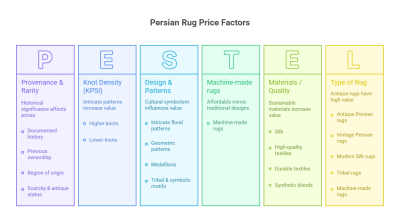
Conclusion: More Than a Floor Covering
Understanding Persian rug prices involves more than considering size or material. From antique to machine-made, Persian rugs share a common language of quality. High knot counts, intricate designs, quality materials, and natural dyes collectively define this quality.
Understanding these elements helps you find a rug you will love, both for its beauty and its value, in any style. Our Traditional Persian Rugs Collection and 8×10 (Large) collections showcase the timeless artistry, history, and elegance of these rugs. The value of Persian rugs lies not only in their price but in the stories they tell and the beauty they bring into your home.
